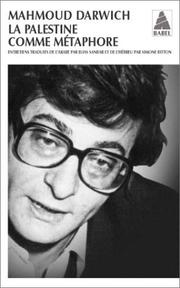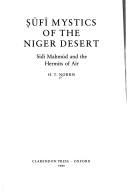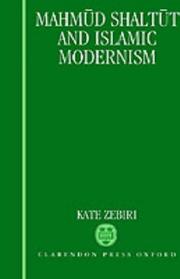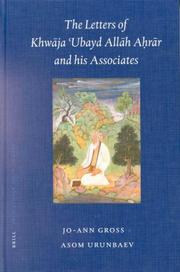| Listing 1 - 10 of 114 | << page >> |
Sort by
|

ISBN: 2742739459 Year: 2002 Volume: 555 Publisher: Arles, Bouches-du-Rhône : Actes Sud,
Abstract | Keywords | Export | Availability | Bookmark
 Loading...
Loading...Choose an application
- Reference Manager
- EndNote
- RefWorks (Direct export to RefWorks)

ISBN: 0198265387 Year: 1990 Publisher: Oxford Clarendon
Abstract | Keywords | Export | Availability | Bookmark

ISBN: 0198263309 Year: 1993 Publisher: Oxford Clarendon
Abstract | Keywords | Export | Availability | Bookmark
 Loading...
Loading...Choose an application
- Reference Manager
- EndNote
- RefWorks (Direct export to RefWorks)
Islam --- Doctrines --- Shaltūt, Maḥmūd.
Book
Abstract | Keywords | Export | Availability | Bookmark
 Loading...
Loading...Choose an application
- Reference Manager
- EndNote
- RefWorks (Direct export to RefWorks)
Book
ISBN: 9791037007292 Year: 2017 Publisher: Paris (6, rue de la Sorbonne 75005) : Hermann,
Abstract | Keywords | Export | Availability | Bookmark
 Loading...
Loading...Choose an application
- Reference Manager
- EndNote
- RefWorks (Direct export to RefWorks)
La question du rapport de la poésie à l'action et, de manière plus générale, au monde, se pose en des termes variables selon les époques et les traditions. Pour la poésie du xxe siècle, elle est particulièrement clivante et donne lieu à diverses façons d'articuler responsabilité de l'écriture et conscience de son efficacité problématique, refus des idéologies politiques et méfiance à l'égard de la rhétorique engagée. Les contributions ici réunies ne s'interrogent pas sur le choix entre le verbe ou l'action qui s'offrirait aux poètes (l'opposition entre poésie « pure » et militantisme qui a pu en découler est, on le sait, caricaturale et réductrice), mais plutôt sur les modalités et les formes de l'action poétique, sur la façon dont se noue le rapport au présent, à la mémoire, à l'événement ou encore au collectif. Ces études, qui s'appuient sur le corpus de littérature comparée proposé à l'agrégation de lettres modernes en 2016, permettent de penser ces enjeux en offrant un empan suffisamment large pour saisir la diversité des formes possibles de l'action poétique, dans un contexte européen (avec Federico García Lorca, René Char) et non européen (avec Mahmoud Darwich).
Char, René, --- García Lorca, Federico, --- Darwīsh, Maḥmūd --- Criticism and interpretation.
Book
ISBN: 9004406247 Year: 2019 Publisher: Leiden; Boston : BRILL,
Abstract | Keywords | Export | Availability | Bookmark
 Loading...
Loading...Choose an application
- Reference Manager
- EndNote
- RefWorks (Direct export to RefWorks)
In Persian literary history, Firdawsī's (d. 411/1020) Shāh-nāma , the famous masnavi composed in celebration of the history of the kings and dynasties of Persia, is the archetypal epic poem. After the Shāh-nāma , many other epic poems saw the light, among them Asadī Ṭūsī's Garshāsp-nāma (dated 458/1066) and Īrānshāh b. Abi ʼl-Khayr's Bahman-nāma (dated 501/1107-08), but also Shīʿī adaptations celebrating the wondrous exploits of ʿAlī b. Abī Ṭālib and the beginnings of Shīʿism, such as Rabīʿ's ʿAlī-nāma (dated 482/1089) or Ibn Ḥusām's Khawarān-nāma (completed in 830/1427). The present masnavi is an example of an epic poem in the form of a romance, turning around the love of Sām, the grandfather of Rustam, for the daughter of the emperor of China. Previously ascribed to the 8th/14th-century poet Khwāju-yi Kirmānī, it has now been established that it is a product of later Persian folklore, blending parts of Kirmānī's Humāy u Humāyūn with elements from other tales and romances.
Persian poetry --- Khvājū-yi Kirmānī, Maḥmūd ibn ʻAlī,

ISBN: 9789004492424 9789004126039 Year: 2002 Publisher: Leiden; Boston : BRILL
Abstract | Keywords | Export | Availability | Bookmark
 Loading...
Loading...Choose an application
- Reference Manager
- EndNote
- RefWorks (Direct export to RefWorks)
This English edition of the correspondence of Khwāja 'Ubayd Allāh Aḥrār, the fifteenth-century Central Asian Naqshbandī Sufi shaykh, and his associates provides surprising new insights into the sociopolitical and economic history of premodern Central Asia and the influential roles of Sufi leaders of the time. It contains the extraordinary collection of autograph letters from the Majmū'a-yi murāsalāt , a unique manuscript housed at the Institute of Oriental Studies in Tashkent, Uzbekistan, with petitions to the Timurid court at Herat. The letters cover such topics as internecine conflict, peacemaking, taxation, property and endowments, trade, migration, Islamic piety and law, material support of shaykhs and students, and relief from oppression. Three introductory chapters discuss the Central Asian Naqshbandīya, Khwāja 'Ubayd Allāh Aḥrār, the social, historical, economic and political significance of the letters, and the manuscript and its authors. With the Persian transcription and a complete facsimile of the manuscript letters reproduced at the end of the work.
Uzbekistan --- History --- Aḥrār, ʻUbayd Allāh b. Maḥmūd,
Book
Year: 2019 Publisher: مركز الكتاب الاكاديمي
Abstract | Keywords | Export | Availability | Bookmark
 Loading...
Loading...Choose an application
- Reference Manager
- EndNote
- RefWorks (Direct export to RefWorks)
Self in literature. --- Darwīsh, Maḥmūd --- Literary style. --- Criticism and interpretation.
Book
ISBN: 9751707706 Year: 1990 Publisher: Ankara Ministère de la culture
Abstract | Keywords | Export | Availability | Bookmark
 Loading...
Loading...Choose an application
- Reference Manager
- EndNote
- RefWorks (Direct export to RefWorks)
Islamic philosophy --- Islam --- Sufism --- History --- Qayṣarī, Dāwūd ibn Maḥmūd,
Book
ISBN: 9004425330 Year: 2020 Publisher: Leiden ; Boston : Brill,
Abstract | Keywords | Export | Availability | Bookmark
 Loading...
Loading...Choose an application
- Reference Manager
- EndNote
- RefWorks (Direct export to RefWorks)
The Horizons of Being explores the teachings of Ibn al-ʿArabī by examining Dāwūd al-Qayṣarī’s (d. 1350) Prolegomena ( muqaddima ) to his commentary, Maṭlaʿ khuṣūṣ al-kilam fī maʿānī Fuṣūṣ al-ḥikam (A Preamble of Select Discourse on the Meanings of the Fuṣūṣ al-ḥikam), referred to simply as Muqaddimat al-Qayṣarī. While his commentary represents the third in a direct line going back to Ibn al-ʿArabī through Kāshānī, Jandī and Qūnawī, it remains one of the most popular due to its thorough and accessible treatment of the Fuṣūṣ that frequently synthesizes the ideas of his predecessors. The Muqaddima stands on its own as an independent work and has been the subject of careful study. If the al-Futūḥāt al-makkiyya contains the entirety of Ibn al-ʿArabī’s metaphysics which is distilled in the Fuṣūṣ, then Qayṣarī’s Muqaddima can be read not just as a precis of the Fuṣūṣ but a summary of Ibn al-ʿArabī’s doctrine.
Sufism --- Ibn al-ʻArabī, --- Qayṣarī, Dāwūd ibn Maḥmūd,
| Listing 1 - 10 of 114 | << page >> |
Sort by
|

 Search
Search Feedback
Feedback About UniCat
About UniCat  Help
Help News
News